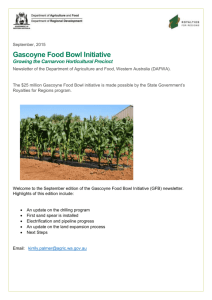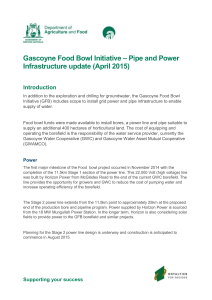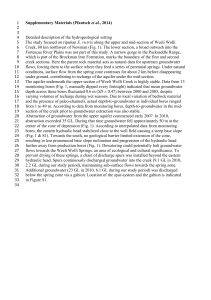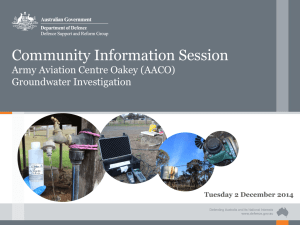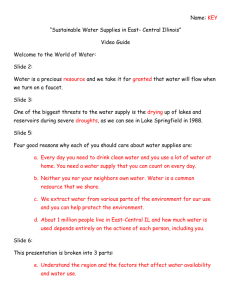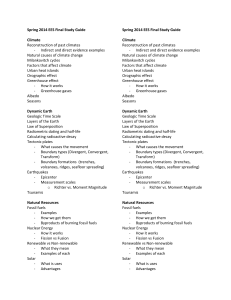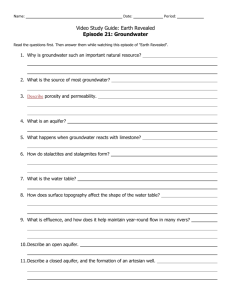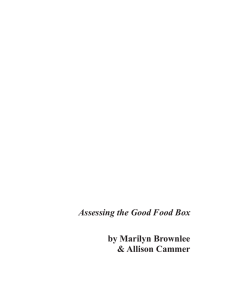Introduction - Department of Agriculture and Food
advertisement
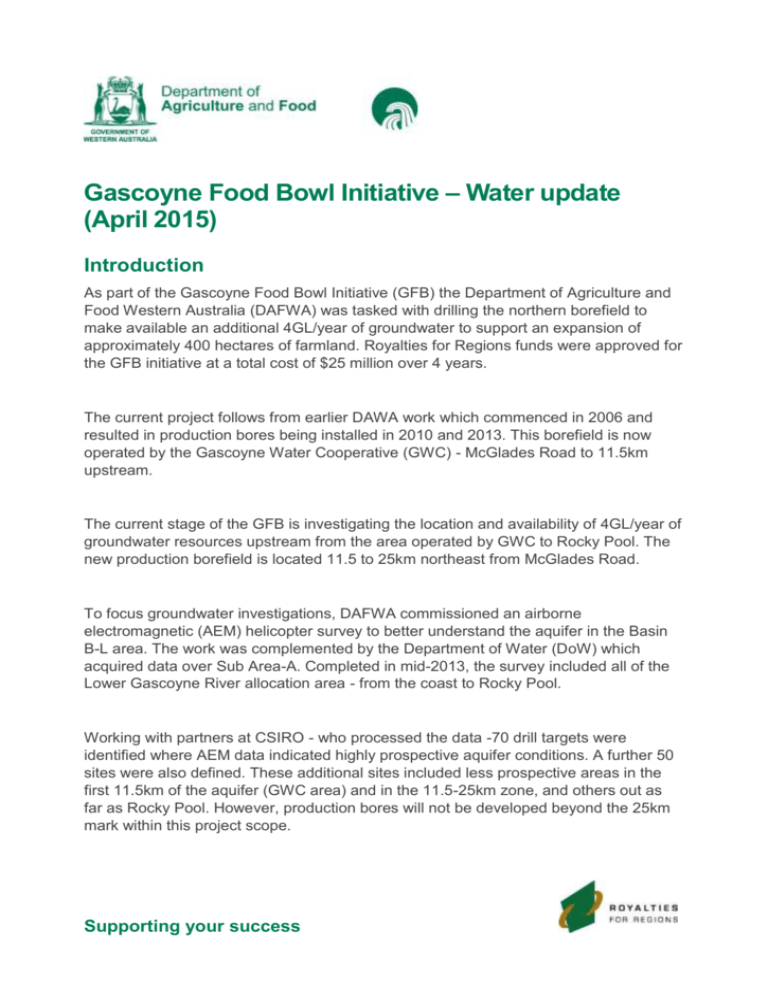
Gascoyne Food Bowl Initiative – Water update (April 2015) Introduction As part of the Gascoyne Food Bowl Initiative (GFB) the Department of Agriculture and Food Western Australia (DAFWA) was tasked with drilling the northern borefield to make available an additional 4GL/year of groundwater to support an expansion of approximately 400 hectares of farmland. Royalties for Regions funds were approved for the GFB initiative at a total cost of $25 million over 4 years. The current project follows from earlier DAWA work which commenced in 2006 and resulted in production bores being installed in 2010 and 2013. This borefield is now operated by the Gascoyne Water Cooperative (GWC) - McGlades Road to 11.5km upstream. The current stage of the GFB is investigating the location and availability of 4GL/year of groundwater resources upstream from the area operated by GWC to Rocky Pool. The new production borefield is located 11.5 to 25km northeast from McGlades Road. To focus groundwater investigations, DAFWA commissioned an airborne electromagnetic (AEM) helicopter survey to better understand the aquifer in the Basin B-L area. The work was complemented by the Department of Water (DoW) which acquired data over Sub Area-A. Completed in mid-2013, the survey included all of the Lower Gascoyne River allocation area - from the coast to Rocky Pool. Working with partners at CSIRO - who processed the data -70 drill targets were identified where AEM data indicated highly prospective aquifer conditions. A further 50 sites were also defined. These additional sites included less prospective areas in the first 11.5km of the aquifer (GWC area) and in the 11.5-25km zone, and others out as far as Rocky Pool. However, production bores will not be developed beyond the 25km mark within this project scope. Supporting your success Exploratory drilling commenced in September 2014 with two drilling rigs operating on the borefield. Contracts for drill supervision, aquifer testing and civil works were also let and are being managed by DAFWA. As of mid-April 2015, all of the 120 exploration bores and 80% of the planned 35 production bores have been drilled. Flow testing and sampling bores is well advanced. While there have been several breaks for weather, including Tropical Cyclone Olwyn, it is anticipated that drilling will be completed by June 2015. Reporting water information and aquifer modelling will follow so that the Department of Water can reassess the region’s water licensing allocation. Results to date (11.5 to 25km): Bores capable of delivering 4GL/year have been installed Average flow rates are greater than 10 L/sec At completion the maximum instantaneous flow rate should be approximately 400L/sec Drill success rate (exploration to production) increased from 5:1 to <3:1 AEM identified areas with a high probability of deeper sands; but cannot be used to reliably map aquifers at the scale found along the River AEM targets generally have production flow rates higher than existing bores Groundwater salinity is low but typically variable – suitable for irrigation; some bores suggest impacts of 2011 and 2014 brackish river flows Page 2 of 3 Map of drill sites and project area – showing three Phases of the GFB Project as planned. Exploration (dots) and production bores (stars) completed to date are shown on the AEM map. The colours represent forecasts of sand thickness based on interpreted AEM data. Page 1 of 3
